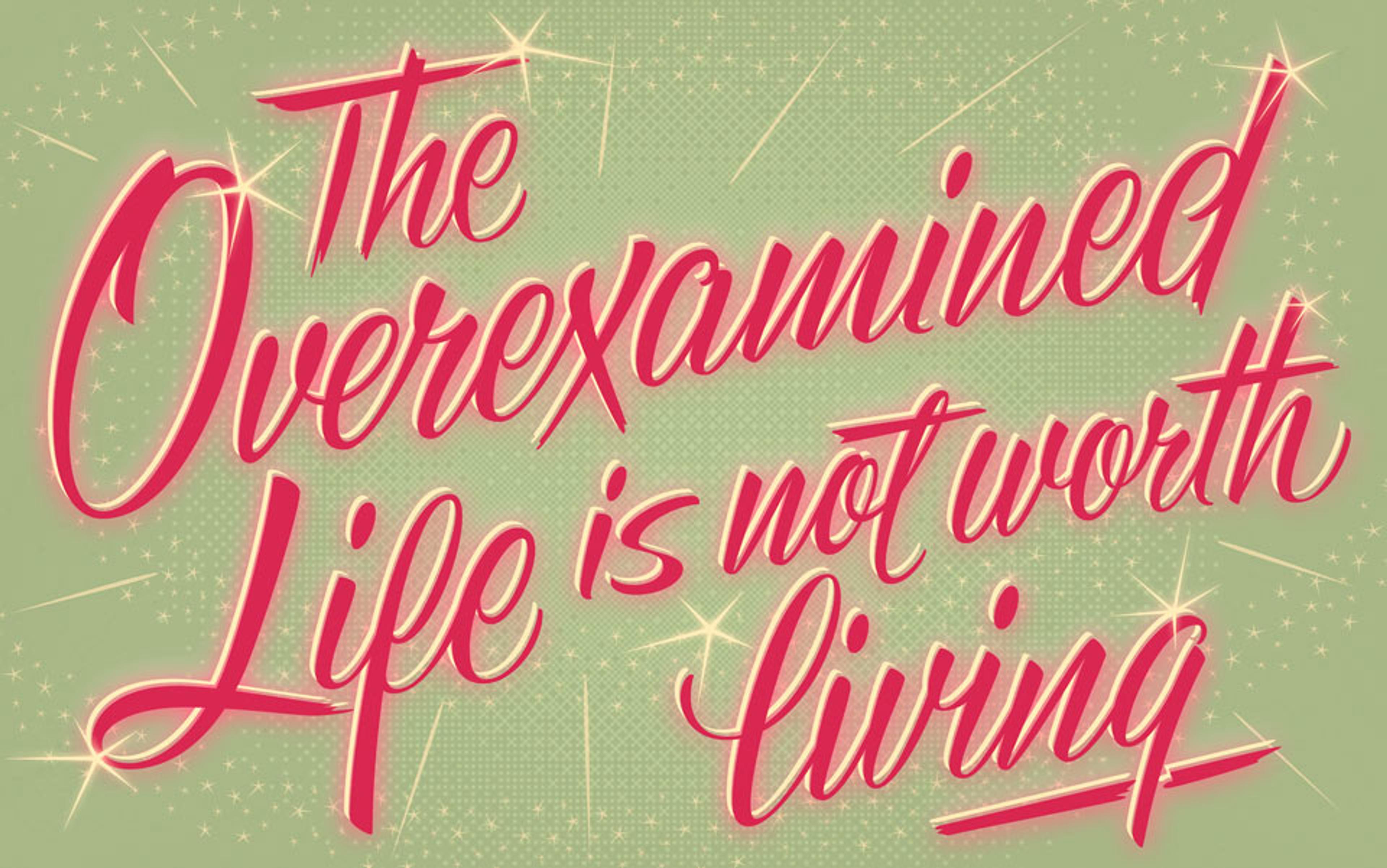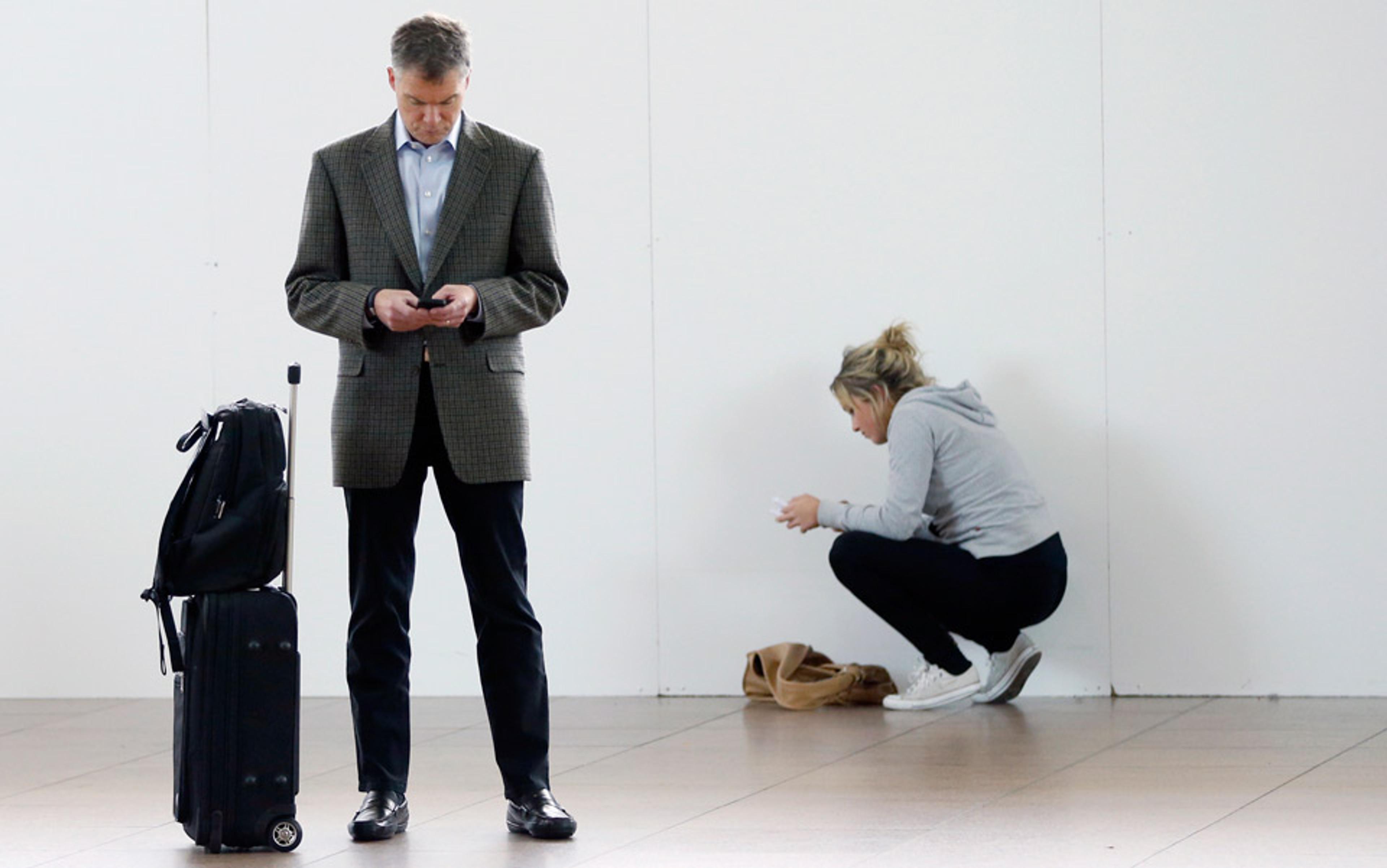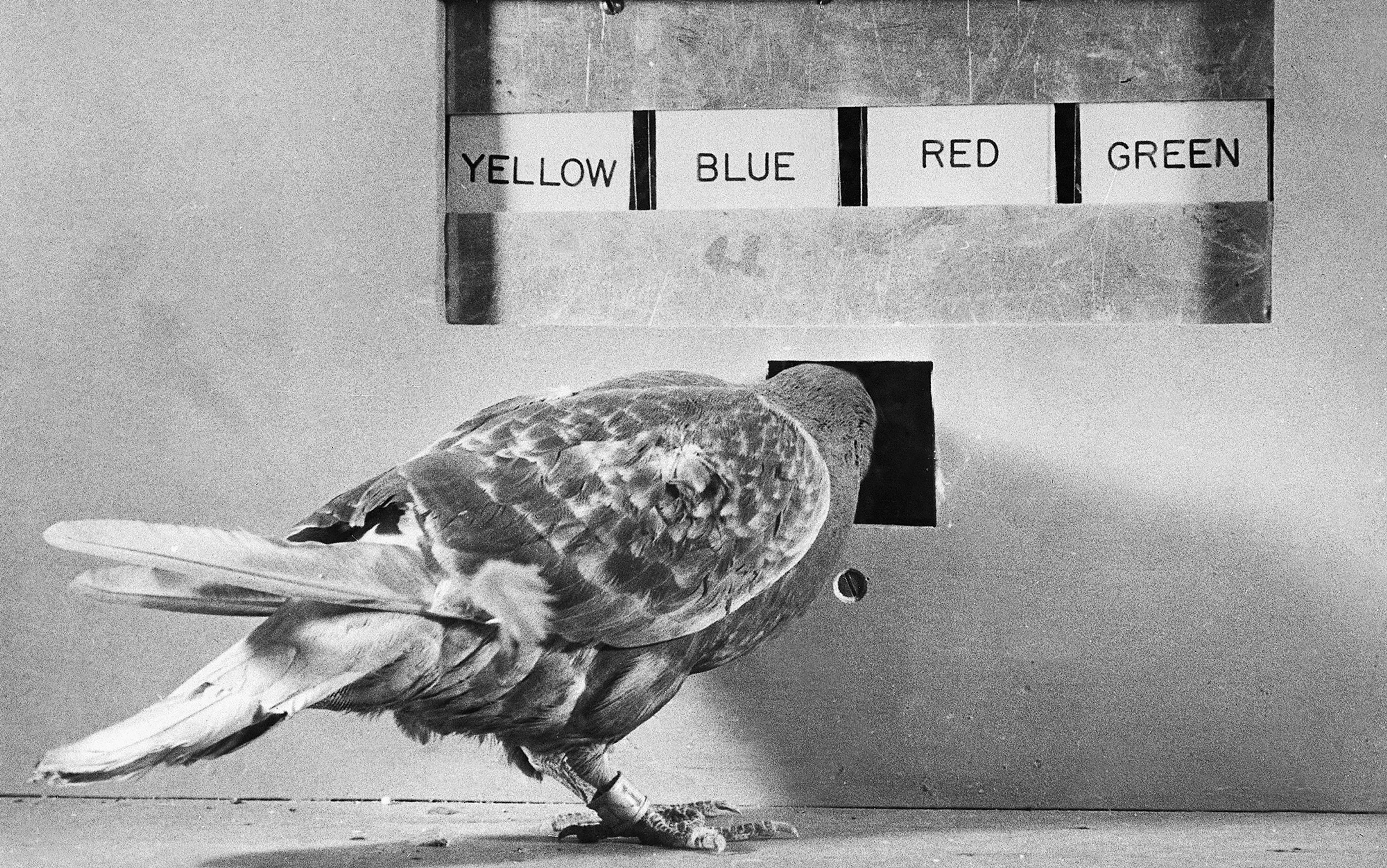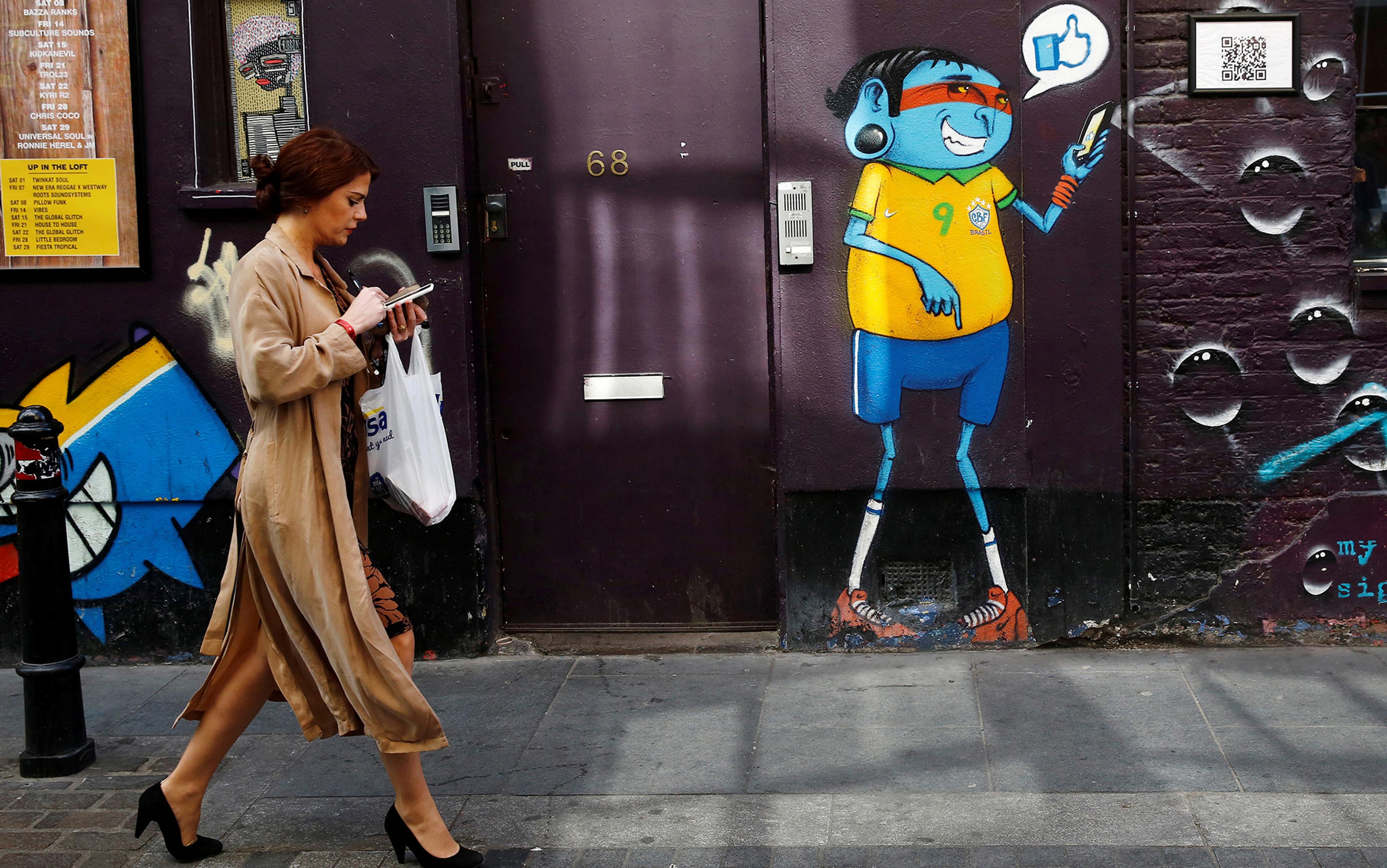Last Sunday, my mother telephoned. We had a good chat. Afterwards, instead of switching off my iPhone, I opened an app called Lift and, beside the words ‘Call mom/dad,’ I awarded myself a big green tick. I noted this was the ninth time I had spoken to my parents in the last month — higher than in the period immediately before, but not as high as I’d hoped.
I might never have started logging calls with my parents if I hadn’t met Kevin Warwick, professor of cybernetics at Reading University. Warwick achieved global fame 15 years ago by inserting a microchip into his arm to open doors. Subsequently, he has carried out many additional experiments, using his own body as a laboratory. Meeting him in 2011 at his university lab, for a story in The Sunday Times, I learned that many of his students have done the same with their own bodies. ‘We have one who put an electric current into his tongue as part of an experiment,’ Warwick told me. ‘The next day when I saw him he couldn’t speak properly. He’d got the voltage wrong. But he’s OK now, because the swelling has gone down.’
It’s in the nature of experiments that some will not work out happily. But ‘self-hacking’ — using data collected about yourself to spot patterns — has a respectable history. The Australian gastroenterologist Barry Marshall believed that stomach ulcers were caused by bacteria rather than stress. To prove it, in 1982, he swallowed a Petri dish of H. pylori and immediately developed severe colitis. In 2005, Marshall was awarded a Nobel prize.
Inspired by Warwick and his students to investigate further, I discovered that many thousands of people are carrying out experiments on themselves — a good number of them outside academic institutions — as part of the Quantified Self (QS) movement. The movement was founded in the US in 2007 by Gary Wolf and Kevin Kelly, editors at Wired magazine. Wolf and Kelly felt that the explosion of personal tracking technologies presented a kind of mirror in which we might see ourselves. Today, something like 18,500 QS members belong to more than 100 groups, in 31 countries around the world. They represent perhaps the most technologically advanced adepts of the fashion for self-improvement which has established itself amid declining religious practice and increased social acceptance of talking cures of one kind or another. The spiritual home of the QS movement is a website: QuantifiedSelf.com.
One of the leading exponents in the UK is former banker Adriana Lukas, who has been running the London QS group since its inception in July 2010. The group meets for regular ‘show and tell’ sessions. At one, a man named Jon Cousins described how he launched a study of his own mood swings to demonstrate to doctors that he is bipolar. His results led the Institute of Psychiatry in London to put money into further research on a platform to help others. ‘It was the first research investment of its kind to have been instigated by a patient,’ Lukas told me.
Until now, she said, the history of medicine has been the history of doctors, whose priestly wisdom has been delivered to clueless, passive recipients as if it was gospel. Cousins’s story reversed that. Psychiatrists had asked him to map his moods for three months, so he developed a simple means to do it online every day and share his mood map with friends. They provided a supportive network, a bit like Weight Watchers. His moods immediately started to improve and became more stable: the act of monitoring had itself produced an effect.
It felt like I’d moved into a tiny apartment with my inner statistician, who didn’t appear to be very talented, and wasn’t enormously fun to be with
In researching the process of change for my book How To Change the World (2012), I had compared the broad, sweeping theories of political scientists such as Gene Sharp, the American advocate of non-violent struggle, with the insights of the self-help industry. In both cases, change begins with observation — noticing what needs to change — followed by a clear declaration of that observation. Listening to Lukas talk about Cousins confirmed this pattern. I was exhilarated by what QS might teach us, not only in relation to one man’s mental health, but about how we can collectively effect change.
What should I measure, and how? I happened to mention the QS project to my accountant, a woman who derives enormous satisfaction from statistics, and who would (if allowed) send me charts showing every dip in my earnings and peak in expenses. She’d never heard of the QS movement, but had unwittingly been a part of it for some time: she was using an iPhone app, Symple, to track certain medical symptoms and their possible causes and cures.
I downloaded Symple, which allowed me to list as many symptoms as I liked, and score them each day (on a range from none to severe), as well as what Symple calls ‘tags’ (things that cause or alleviate the symptoms). I hoped to remedy tiredness, an eczema-like skin condition, stiffness, and irritability. Over two weeks, it became clear that tiredness was the thing that bothered me most. I was delighted to have even this highly subjective data to give me a sense of what really mattered. I felt like a man who, on being given a map, finally realises that he was lost all along.
Having noticed my tiredness problem, then what? The remedy seemed too obvious: go to bed earlier. I mentioned my findings to my wife, who remained unfascinated. I was learning that the QS experiments of one person might not be at all interesting even to that person’s nearest and dearest. Over the following days, I observed that she made no obvious effort to go to bed earlier; I was at liberty, she told me, to go to bed earlier myself.
My other problems were more complex. If you have a simple pair of variables (to bed early/to bed late) it’s relatively easy to choose between them. But most of life is full of variables. For instance: how am I supposed to list, let alone measure, what makes me irritable? Lacking a better idea, I decided to track my coffee intake (negligible), cups of green tea (too many) and glasses of water (nil, shamefully, some days). I downloaded another app, Trakr, to count it all. After a few days I concluded that because Trakr does not create graphs, showing whether my intake had risen or fallen, it was useless. By then I had logged, among much else, 220 minutes of walking, 20 slices of bread, five Facebook posts, and 62 cups of green tea. I’d learnt nothing. And it felt like I’d moved into a tiny apartment with my inner statistician, who didn’t appear to be very talented, and wasn’t enormously fun to be with.
Seeing others getting satisfaction from their QS experiments only added to my frustration. One friend told me he’d run a half-marathon with a monitor that told him his average speed over every mile and how many people he’d overtaken or been overtaken by. He used the information to pick up his speed, and produced a personal best time.
Undefeated, I loaded a more complex app, TracknShare. This was a bit like Symple, but with a broader scope than health. Within each category, TracknShare provided variables I might wish to monitor, which explains how I found myself entering data on the number of portions of meat/beans I had eaten in any given day. It didn’t take many days before I made a discovery: I was bored. Meat/bean intake might be utterly absorbing for some, but not for me. And I certainly had no intention of inflicting that information on my Facebook friends and Twitter followers, as TracknShare would have liked me to do.
‘The unexamined life is not worth living,’ Socrates said. Ditto the over-examined life, as QS sceptics like to point out. In seeking to quantify myself towards self-improvement, I was embracing and quickly abandoning various apps (not all of them free) but discovering nothing significant. I was lucky enough not to be very interested in my health, but I hadn’t found the things that mattered, much less identified ways to understand them through statistics. I was failing badly.
Why should we use statistics at all? Socrates didn’t. Neither did he insert gadgets into his body. Granted, many insights can be generated by the ingenious presentation and interpretation of statistics, but even enthusiasts find some data impenetrable. Eric Boyd, a leading QSer from Canada, is due to tell the European QS conference in May about data collected by his wearable Nike Fuelband, which monitors his daily biometrics. Some of the spikes in the graphs remain utterly mysterious to him. I wish Boyd luck resolving that mystery, but I don’t have the time or interest to pore over graphs that refuse to function as any kind of mirror.
Julia Cameron, in her classic self-help book The Artist’s Way (1991), which makes no references whatever to apps, microchips or the internet even in its revised 2002 edition, encourages us to effect significant personal change by writing daily ‘morning pages’ — essentially automatic writing that can be about anything and is not designed to be published, shared or even re-read by the writer. Noticing what comes up in our morning pages is a good way to find out what really matters to us. While running my QS experiments I did some of Cameron’s low-tech self-improvement work too, and found it to be at least as helpful as anything on my iPhone.
Life coaches use this kind of journaling with their clients: ‘Make a note of the number of times you do this,’ they might say. The very act of noting it makes us stop doing the things that are unhelpful, and do more of the things that do help. Until last summer I had never had the experience of being coached. I had low expectations, but I knew and trusted the woman coaching me. In the event, I was blown away by the effect of being allowed, encouraged and even cajoled to talk about the things that really mattered to me and the things I wanted to do. My sessions led directly to a number of significant achievements, and to a slightly different sense of myself. I was so impressed, I started training as a coach, to give others a space to share what most of us usually keep locked up.
When I discovered the Lift app, I saw that it offered some of the same benefits. Unlike other apps I’d used, it’s intrinsically social, but without necessarily sharing what you do on Facebook or Twitter. Like TracknShare, Lift offers suggestions of habits to consolidate, many of them already being actively pursued by other Lift users globally. I selected habits from a list of popular ones: drink more water (50,000+ participants). Easy ones: take multivitamin (19,000+ participants). And I made up some of my own, only to discover that others were doing these too: morning pages. At the end of each day I ticked the habits I’d done and sometimes added a note giving more detail. My screen might refresh with details of another person, sometimes on the other side of the world, who had just ticked the same item, and if it felt right I might give them a ‘prop’ (like a Facebook ‘like’). Interestingly, I found that propping others felt just as good as when, occasionally, others propped me.
Now, I don’t know who the people are who give me the occasional prop, but the very fact that they’re able to see what I’m doing makes me feel more committed than I was with the other apps. This quality of relationship, of sharing, is hugely important. A recent survey of New York’s QS Meetup group found that only 49 per cent of them share specific data with others — for reasons related to privacy that we’ll come back to. What is telling, however, is that they come together in a meetup, to be together and to share something. QS, it seems, is fundamentally social.
Like any other form of self-improvement, QS is not about securing an ultimate fix. It’s about noticing how you live now, in fine detail
On Lift, the very act of signing up to a particular habit made it more difficult to overlook the step that I wanted to happen. For instance, after giving myself a tick for calling my parents, I noticed the next item on my daily list: meditation. Having noticed it, I immediately slipped off my chair and sat in the lotus position on the kitchen floor, shut my eyes and did a spot of zazen. Afterwards, I gave myself a big green tick, and then my wife appeared, and asked me to help her with something I’d not been looking forward to. Surprisingly, I found I was able to help without the slightest flicker of irritation, and without once looking at my watch to see when the torture might end. In short: I was happy. Was this really because of the meditation? I think so.
Self-hacking can be about self-awareness in the moment, rather than always trying to move towards a significant longer-term goal — a way of creating beneficial everyday habits. After all, cleanliness is a state to aspire to, but having achieved it, even the most self-satisfied people accept that they will at some point in the near future need to bathe or shower again. I have no difficulty remembering to shower, but if meditation is helpful, and I want to do it more, it can help to log it on my iPhone.
I take my inspiration in this from Nancy Dougherty, a QSer in the US who wanted to be more mindful. She started tracking her smiles, by means of a couple of electrodes attached to her temples. Every real smile, causing the skin to crinkle around her eyes, lit up a set of Christmas tree lights that she wore on her head throughout the day. By this means she noticed that everyday office interactions were not merely task-oriented, but were also opportunities to ‘express joy together’. When my phone reminds me to meditate, I shall remember Dougherty, lighting up among her co-workers, and causing them to light up too.
QS doyens suggest that the next generation of gadgets and devices will proactively track users and analyse data, suggesting ways to alter routines in order to hit the metrics we set. For instance, if wearable devices notice that you are sitting down for too long, they might tell you to get up and stretch your legs. I’m not convinced this will work. Every day at 10pm, the Symple app on my iPhone continues to remind me to input data though I stopped using Symple weeks ago. The mere fact of having programmed a device at some point in the past to make certain suggestions to us in the present does not mean we will pay any attention. For similar reasons, QS enthusiasts say it’s better to monitor data manually than have devices that do all the work. When it’s automatic, they report, the significance of what is recorded often escapes them.
What this implies is that QS is a kind of secular ritual. To be meaningful, it can’t be carried out on our behalf by gadgets. Additionally, QS can be like a kind of prayer that teaches us whether we really care or not. Tracking myself on Lift for several weeks, I’ve realised that I’d failed to give myself even one tick for gardening on my allotment. In the past, I’ve enjoyed pottering about there. Only by logging it have I forced myself to ask whether going to the allotment remains a pleasure, or if it’s turned into a dreary duty. The monitoring created a measure of mildly painful cognitive dissonance — the distressing mental state of finding yourself doing and feeling things that don’t fit with what you know, or think you know, about yourself.
What makes this more distressing is that it’s public. The way we engage on social media leaves a ‘digital fingerprint’, or ‘data exhaust’, which could possibly be valuable to us and to society at large. Indeed, sometimes the public nature of the digital fingerprint is the whole point. An app called DidThis encourages the spread of beneficial actions — you do something and, if other users like it and do it too, that action creeps up the ranking. This is about more than individual self-improvement. It’s about deliberately trying to effect beneficial change at a social level.
But our digital fingerprint might also create trouble, as Andrew Keen argues in his book Digital Vertigo (2012). We are fools to sacrifice our privacy by putting everything on Twitter, Facebook and blogs, Keen says. He compares us to Jeremy Bentham, the 19th-century philosopher who wanted to be stuffed after his death and now sits on view in his glass case at University College London, for all to see, forever.
Others similarly worry about the privacy risk within the QS movement, including some academics who attended last year’s QS conference in Palo Alto. Self-trackers, they think, are locking themselves into panoptical prisons through a convergence of narcissism, consumerist gadget love and conformist obedience to corporate monitoring. But what information have I shared in the big data cloud? Well, I’ve made public my lack of commitment to my allotment. I’ve counted the number of times I’ve spoken to my parents. And on 18 March I told other users of Lift (under the habit ‘Be grateful for something’) that I’m grateful for ‘Google hangouts’, believe it or not.
How might current or prospective employers behave differently if depression was aggregated into some kind of assessment of a person’s mental health?
These little bits of seemingly innocuous data from individuals can be aggregated across entire populations, with effects that are good and bad. I recently discovered a texting app that monitors the language we use and identifies changing patterns that might indicate conditions such as Alzheimer’s. Is that something you would welcome as useful, or would it make you paranoid? When individuals are seen only through the prism of statistics, they’re liable to feel misunderstood and mistreated.
This is a grave matter. ‘In the aggregate, QSers generate data that makes large institutional data-collectors salivate,’ the ethnographers Dawn Nafus and Jamie Sherman of Intel Labs say in their draft paper on the quantified self movement, ‘This One Does Not Go Up to 11’. Every granule of health-related data contributes towards a bigger picture of society as a whole. That big picture might produce real benefits, helping to pinpoint causes and even cures, but what might change for each one of us, individually, if insurers got their hands on this information? How might current or prospective employers behave differently if things such as mood swings or depression were aggregated into some kind of assessment of a person’s mental health?
What would ensue, if my Lift data was aggregated with other people’s? The government might start selling off (even more) allotments, under the mistaken impression that people have gone off growing their own food, when actually the problem is a shortage of time. Google might attain some nefarious advantage over me and other users of Hangouts. And my parents might start to notice patterns in my phone usage. They might complain if I fall short, or, just possibly, complain if I call them too often.
Like any other form of self-improvement, QS is not about securing an ultimate fix. It’s about noticing how you live now, in fine detail, and moving playfully towards new ways of being — always fully aware that there will be more changes to make when you get there. Ironically, it might be this endless, rapid process of change that protects us from the dark forces of big data. ‘Evolving one’s tracking practices frustrates would-be big-data collectors,’ say Nafus and Sherman in their paper. ‘Creating an aggregate coherence from fragments of three-week tracking stints is far more difficult to do than from steadily collected longitudinal baselines.’ Rather than beat myself up for migrating, restlessly, from one app to another, I shall give myself a pat on the back each time I do it. In fact, more than that, I shall try somehow to consolidate it — make it a regular part of my life — as a very healthy habit indeed.






